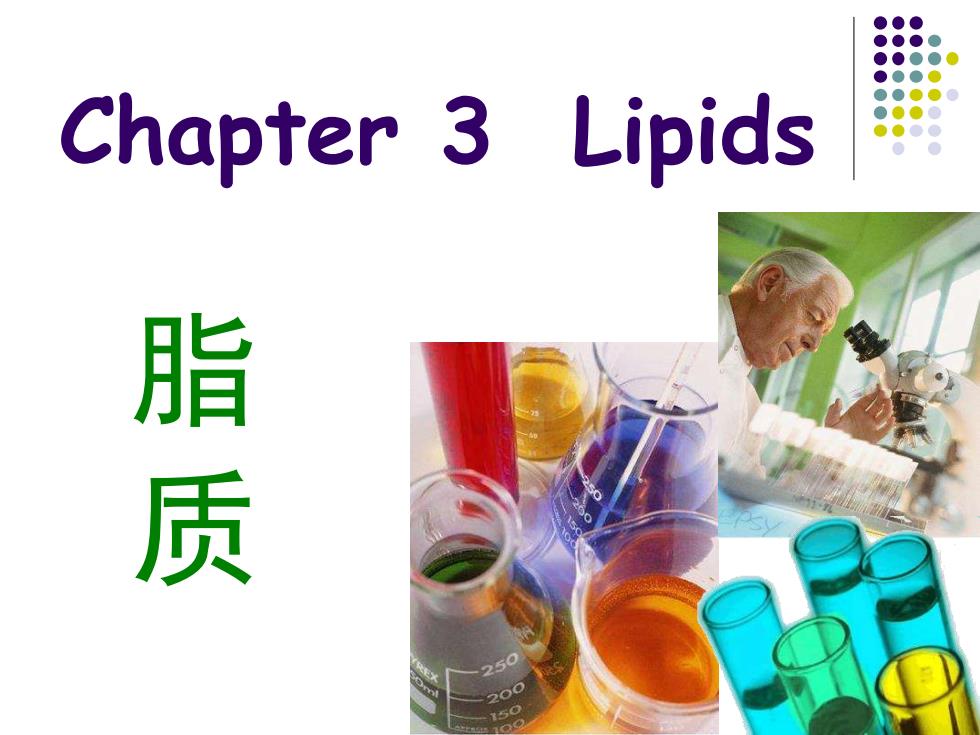
Chapter 3 Lipids 脂 质
Chapter 3 Lipids 脂 质
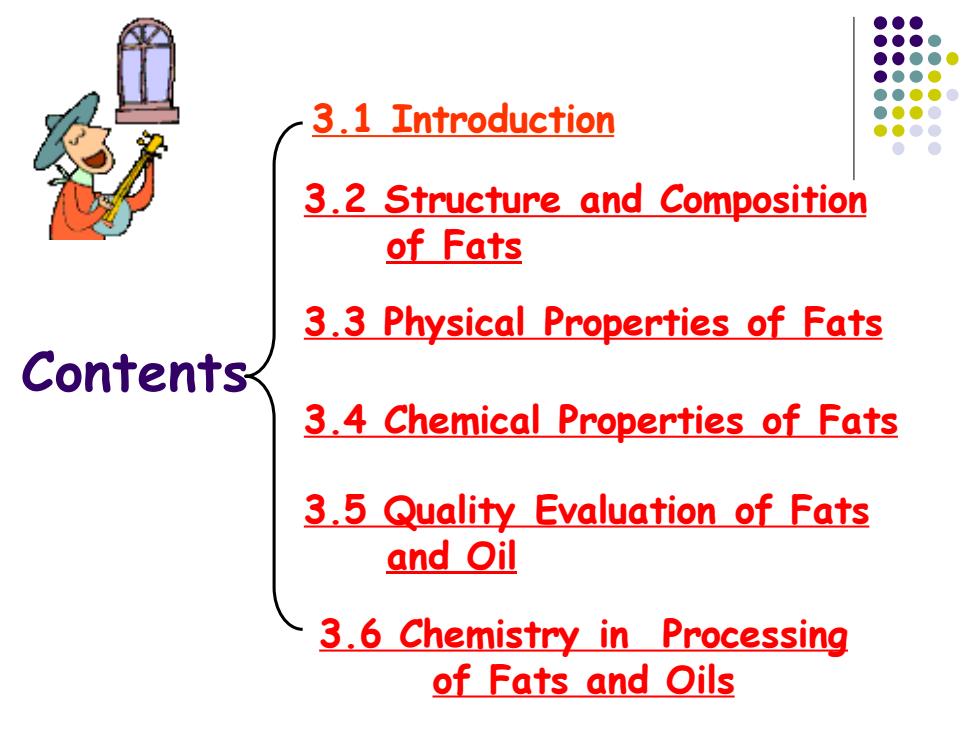
Contents 3.6 Chemistry in Processing of Fats and Oils 3.1 Introduction 3.2 Structure and Composition of Fats 3.3 Physical Properties of Fats 3.4 Chemical Properties of Fats 3.5 Quality Evaluation of Fats and Oil
Contents 3.6 Chemistry in Processing of Fats and Oils 3.1 Introduction 3.2 Structure and Composition of Fats 3.3 Physical Properties of Fats 3.4 Chemical Properties of Fats 3.5 Quality Evaluation of Fats and Oil
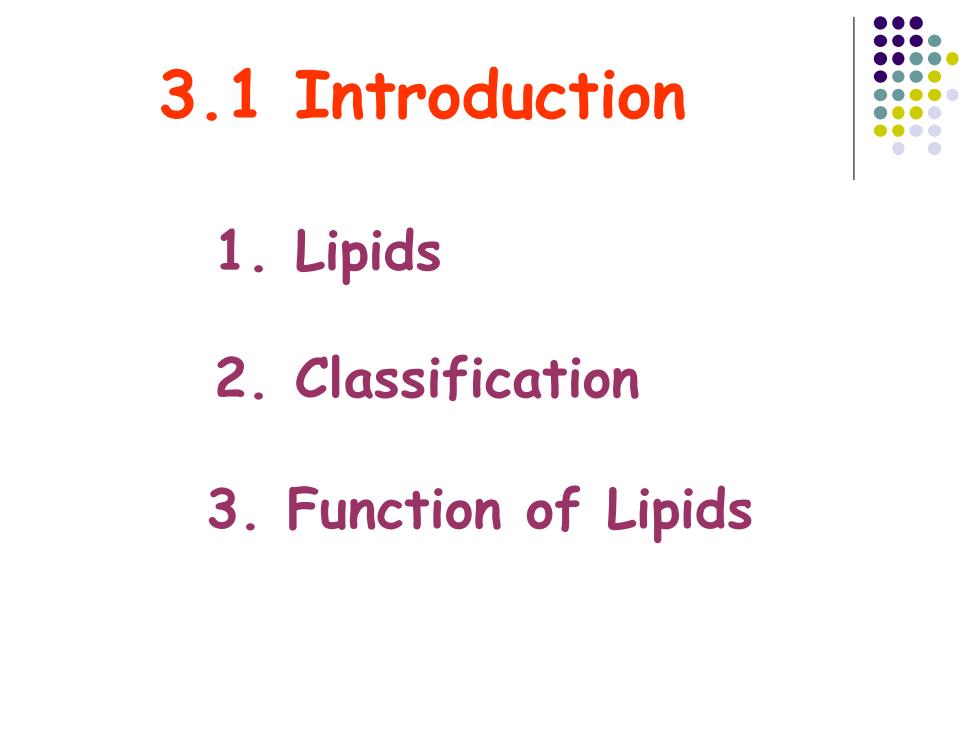
1. Lipids 3.1 Introduction 2. Classification 3. Function of Lipids
1. Lipids 3.1 Introduction 2. Classification 3. Function of Lipids
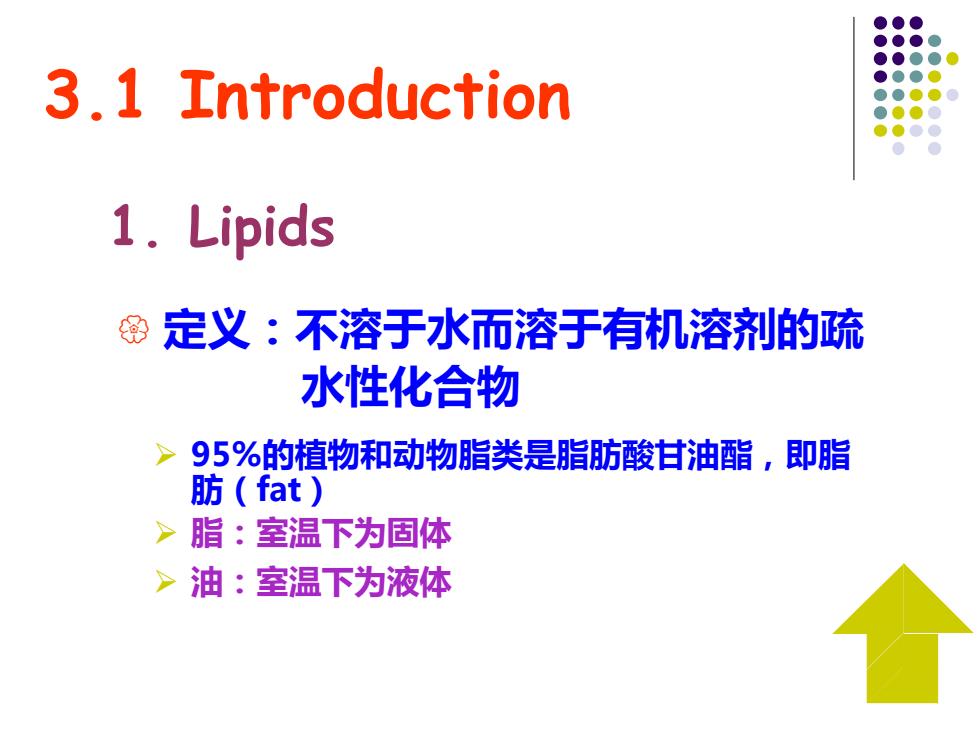
1. Lipids 3.1 Introduction 定义:不溶于水而溶于有机溶剂的疏 水性化合物 ➢ 95%的植物和动物脂类是脂肪酸甘油酯,即脂 肪(fat) ➢ 脂:室温下为固体 ➢ 油:室温下为液体
1. Lipids 3.1 Introduction 定义:不溶于水而溶于有机溶剂的疏 水性化合物 ➢ 95%的植物和动物脂类是脂肪酸甘油酯,即脂 肪(fat) ➢ 脂:室温下为固体 ➢ 油:室温下为液体
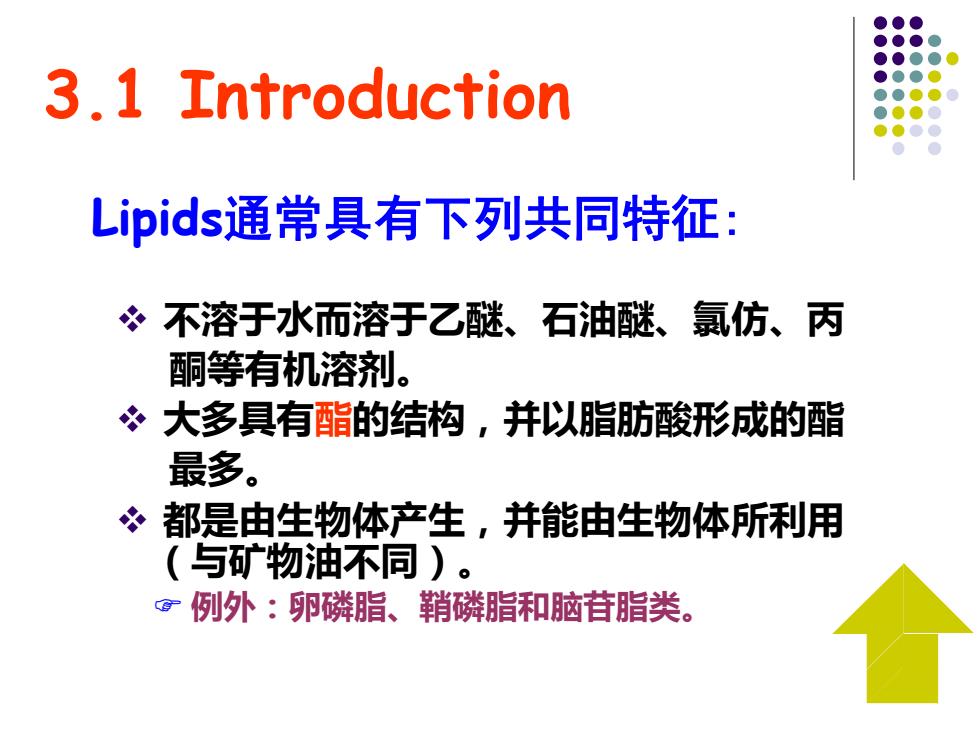
3.1 Introduction Lipids通常具有下列共同特征: ❖ 不溶于水而溶于乙醚、石油醚、氯仿、丙 酮等有机溶剂。 ❖ 大多具有酯的结构,并以脂肪酸形成的酯 最多。 ❖ 都是由生物体产生,并能由生物体所利用 (与矿物油不同)。 例外:卵磷脂、鞘磷脂和脑苷脂类
3.1 Introduction Lipids通常具有下列共同特征: ❖ 不溶于水而溶于乙醚、石油醚、氯仿、丙 酮等有机溶剂。 ❖ 大多具有酯的结构,并以脂肪酸形成的酯 最多。 ❖ 都是由生物体产生,并能由生物体所利用 (与矿物油不同)。 例外:卵磷脂、鞘磷脂和脑苷脂类